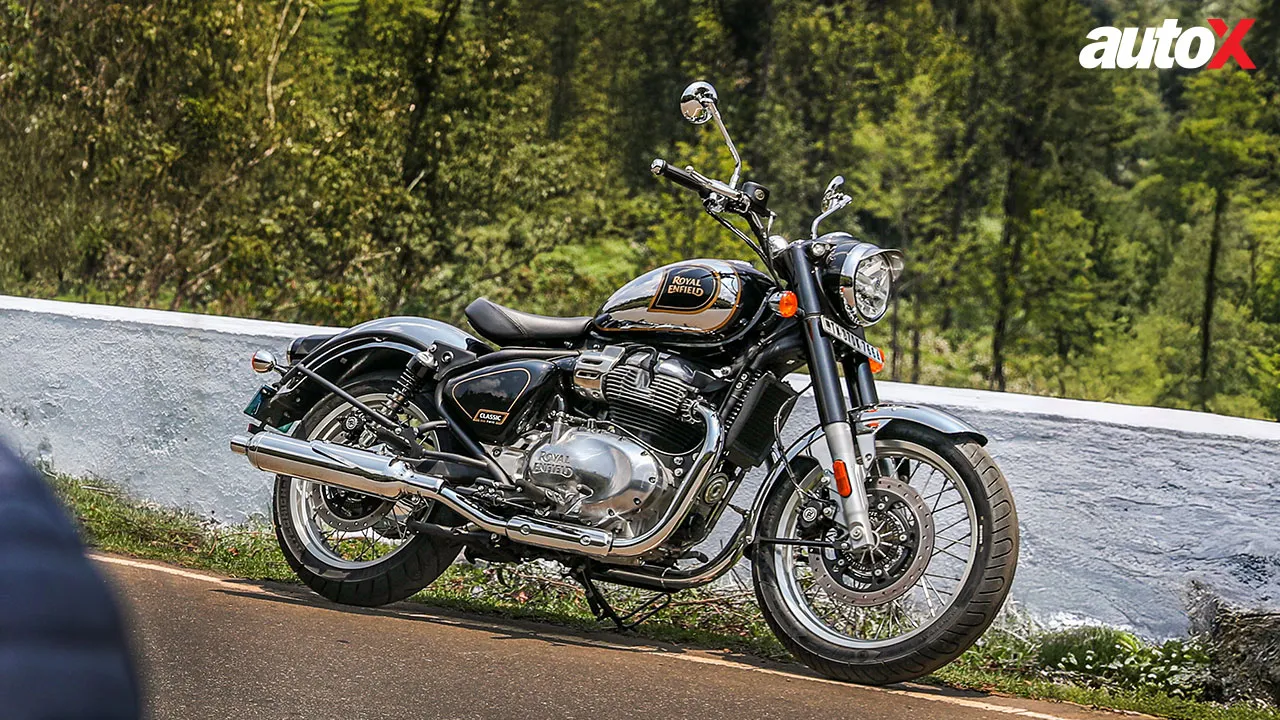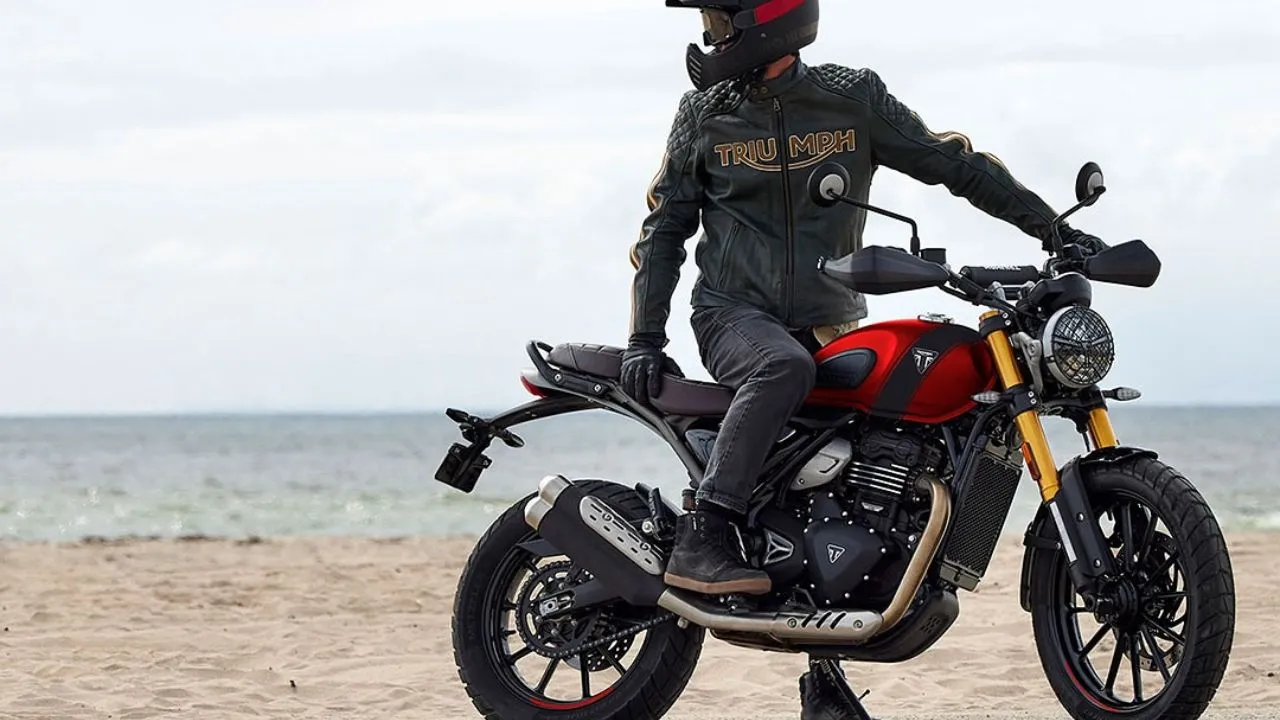Royal Enfield Himalayan & Ducati DesertX Off Road Comparison Review: Ultimate ADV Bike vs Rider Challenge
Does spending more money on an off-road motorcycle make you a better off-road rider? To find out, I set out on an adventure with two very capable Enduro-ready ADVs at two very different price points.

Alright, let’s get real here. Haven’t we all spent a bit too much time watching off-roading clips on YouTube? No? Just me? Whether it’s marvelling at Pol Tarres effortlessly clearing gaps on his motocross bike or watching an endurance masterclass by Andy Riemann as he conquers continents, these moments ignite something in me. These videos and plenty of off-road excursions have me obsessed with off-road-ready machines. I’m talking about the kind of obsession where you find a way to make a down payment in the morning and have the bike in your garage by the afternoon. But before I take that plunge, I need to honestly assess my skills.
Currently, I ride a Triumph Trident 660 almost every day and have dabbled in racing, enough to consider myself an above-average on-road rider. However, I know that I lack the experience to confidently call myself a fast or skilled off-road rider. So, which motorcycle would work best for me? A light middle-weight machine that demands technical skill to master it, or a 100bhp+ behemoth with enough power to bulldoze through obstacles? Well, if you still haven’t guessed it, I’m talking about the Royal Enfield Himalayan 450 and Ducati DesertX. Let’s delve deeper and try to find out.
Royal Enfield Himalayan & Ducati DesertX Offroad Comparison: Does Size Really Matter?
Having previously ridden the Royal Enfield Himalayan, I was somewhat accustomed to its size and weight. At 196kg with an adjustable seat height of 825mm, it’s quite manageable and doesn’t intimidate riders, even those who are under 6 feet tall. However, the Ducati DesertX is a different story altogether. With a wheelbase of 1,608mm, weighing 210kgs, and a seat height of 875mm, it definitely makes its presence felt. When I was scheduled to pick up the motorcycle from the Ducati dealership, I had already started to stress about its size in the city and eventually, off the road. What surprised me, though, was how well it hides its weight once you’re on the move. Climbing on and picking it up from its side stand requires you to muscle it around but post that, it got a lot easier to handle.

While the Himalayan feels approachable right from the start, the DesertX is equally friendly as soon as you twist the throttle. You see, a motorcycle, by way of its design, wants to stay upright and track straight under acceleration. Thanks to its balanced weight distribution, agile handling, and responsive throttle, I’d argue that the DesertX is actually the more agile handler of the two. I think that while the Royal Enfield is slightly lighter and narrower, which typically makes it easier to ride in most situations, it tends to feel heavier when it gets bogged down, especially in off-road situations. Indeed, if your off-road riding posture isn’t spot on, the DesertX can tire you out quicker if you try to wrestle it too much. However, in less technical, faster off-road sections, the DesertX turned out to be the more enjoyable ride, despite its size and weight.
Also Read: 2024 Royal Enfield Himalayan vs Triumph Scrambler 400X: Which is Better for Everyday Adventure?
Royal Enfield Himalayan & Ducati DesertX Offroad Comparison: Do Features Help You Get Better?
The Ducati DesertX, like other premium big bikes, holds a significant advantage over models such as the Royal Enfield Himalayan due to its extensive electronic aids. Given its substantial power, these features not only enhance safety on-road but also off-road. These may sound like novelty features for ‘true’ off-road riders but for those new to the game, not having them now seems inexcusable.

Foremost among these electronic aids are the multiple ride modes: Rally, Enduro, Sport, Urban, Touring, and Wet. These modes are invaluable for riders unsure about their ability to handle different terrains. Rally mode, offering minimal electronic interference, was my preferred choice during the entirety of my time with the DesertX. Additionally, each mode allows customisation to suit your preferences in terms of power levels, traction control, wheelie control, and engine brake control. Moreover, the DesertX also gets a smooth bi-directional quick-shifter, which adds to the convenience by eliminating the need to manually operate the clutch. This is particularly helpful when navigating off-road obstacles.

After riding both motorcycles, the biggest lesson I learned is that simpler is often better. Despite the Ducati DesertX’s size, weight, and powerful engine, I preferred setting the traction control, brake control, wheelie control, and ABS to their lowest settings. While turning off TC and ABS entirely made the bike a bit unpredictable, my chosen settings allowed me to push the limits without sacrificing control.
In contrast, the Royal Enfield Himalayan offers a simpler approach with just four ride modes: Performance with ABS on, Performance with ABS off, Eco with ABS on, and Eco with ABS off. Opting for Performance mode with ABS off provided a predictable power delivery, making off-road riding less daunting. Surprisingly, I found myself keeping up with the DesertX quite well, thanks to the Himalayan’s predictable power delivery.

Throughout the ride, I couldn’t help but think that the DesertX would be able to do a lot more with a more skilled rider on board. However, the Himalayan was approachable enough to allow me to push it to its limit a lot sooner, providing a different yet equally rewarding off-road experience.
Another point I’d like to add around the features department is the instrument cluster. The Himalayan carried a lot of buzz around the high-end cluster at the time of its launch, with many praising it for the amount of features you get. In fact, it is also the first circular cluster in the world to feature Google Maps integration. The DesertX also has a well-loaded console, and I particularly liked the design which mimicks a cockpit straight out of a Dakar rally bike. However, despite the information on offer, we realised we hardly ever used them during our test. Despite having the more advanced tech, the RE Himalayan was less distracting when trying to focus all your energy on not falling.

Royal Enfield Himalayan & Ducati DesertX Offroad Comparison: Does Big Power Make a Big Difference?
I’m someone who typically favours more power, for I believe that it leads to more fun. On the road, this mindset holds true with the Ducati DesertX’s 937cc Testastretta L-Twin engine, pumping out 110bhp and 92Nm of torque. The power delivery is exhilarating, with peak torque hitting at just 6,250rpm, ensuring a surge of acceleration with every twist of the throttle. This power is manageable on solid tarmac but becomes challenging on loose surfaces like sandy or gravelly terrain, where relying solely on raw power can be overwhelming. As mentioned earlier, I prefer not to rely heavily on electronics, which made the DesertX a bit overwhelming for my off-road preferences.

Interestingly, I was able to harness about 50% of the DesertX’s peak power output off the road, and if you do the math, this figure coincidentally aligns closely with what the Royal Enfield Himalayan achieves with its 450cc single-cylinder engine, i.e., 39.4bhp and 40Nm of torque. The Himalayan’s near-square engine design strikes a good balance between power and torque delivery.
Also Read: BMW R 1300 GS Review: The Big Daddy of ADVs has a Change of Heart
During my time with both bikes, I was able to push the Himalayan – given its relatively limited power – to about 60% of the on-road performance I achieved with the DesertX and about 80% of what I achieved off-road. Overall, while I’d love to replicate the DesertX’s on-road performance off-road, for now, the Royal Enfield Himalayan makes more sense for my off-road requirements.

Royal Enfield Himalayan & Ducati DesertX Offroad Comparison: Can I Handle the Truth?
So far, while my heart may lean towards the Ducati DesertX, my head seems to favour the Royal Enfield Himalayan. Now, in terms of handling, both bikes truly shine as capable enduro-ready motorcycles.
The Ducati DesertX gets KYB front suspension, a KYB mono-shock, and Pirelli Scorpion tyres, all of which make it a beast off-road. It handles broken, undulated terrain effortlessly, navigating ruts and dips with ease, so much so that if blindfolded, you might mistake rugged off-road paths for regular Indian roads weathered by monsoons. Furthermore, the suspension is not only predictable but also communicates well, helping you anticipate and tackle obstacles effectively.

The Royal Enfield Himalayan, too, I would say is one of the best-handling motorcycles in its class. Furthermore, as I had mentioned, its lightness and agility further help it absolutely float over offroad obstacles. A big part of why it manages to impress with its off-road prowess, is thanks to premium components like Showa 41mm USD forks and 200mm of travel at both ends. However, one area where the Himalayan does seem out of place is when it comes to jumping it. Since the suspension is set up a little too much on the softer side, you do end up bottoming out and upset the balance every time you try to land.

Overall, both motorcycles are different in how they look, how fast they are, what they offer and how much they cost. Yet, one thing that does bring them a lot closer is the fact that both manufactures, Ducati and Royal Enfield, have managed to offer a product that is built to take on adventures in its stride. While one goes about its business blatantly, the other does so efficiently.
Royal Enfield Himalayan & Ducati DesertX Offroad Comparison: So, Which One Should I Choose?
Overall, both the Royal Enfield Himalayan and Ducati DesertX stand out as highly capable off-road machines that are also suited for long-distance travel. While I might desire the Ducati DesertX due to its impressive performance, features, and road presence, when it comes to making a purchase decision and spending money, I would, without a doubt, choose the Royal Enfield Himalayan.
Also Read: The Great Ocean Road Trip: An Unforgettable Ride through Australia's Greatest Driving Road
Honestly, that’s partly because of the DesertX’s hefty price tag of ₹18.33 lakh (ex-showroom) and partly because the Himalayan seems to be a scaled-down version of it – something that I can confidently handle and enjoy. However, I acknowledge that I was nowhere near fully testing the DesertX’s true limits, and in the hands of a skilled rider, it will absolutely trump the Himalayan in most off-road scenarios without a doubt.
Engine: 937cc / liquid-cooled / twin-cylinder
Transmission: 6-Speed
Power: 110bhp
Torque: 92Nm
Price: ₹18.3 lakh (Ex-Showroom)
X-Factor: The DesertX is simply the most capable road-legal off-road machine you can buy in India.
|
Pros |
Cons |













Write your Comment on